![]()
![]()
![]()
Use LEFT and RIGHT arrow keys to navigate between flashcards;
Use UP and DOWN arrow keys to flip the card;
H to show hint;
A reads text to speech;
24 Cards in this Set
- Front
- Back
- 3rd side (hint)
|
The basic components of emotional arousal are:
1) 2) 3) |
1) physiological arousal
2) expressive behaviors 3) conscious experience Remember the short parable: 1)when a man and a woman love each other very, very much...(arousal) 2) they EXPRESS certain BEHAVIORS in hopes of... 3) C.EX! (Conscious EXperience) |
1)when a man and a woman love each other very, very much...
2) they express certain behaviors in hopes of... 3) C.EX! |
|
|
Explain the James-Lange theory of emotion.
|
The theory that our experience of emotion is our awareness of our physiological responses to emotion-arousing stimuli
As J comes before L in the alphabet, physiological arousal comes before the conscience experience |
J comes before L
|
|
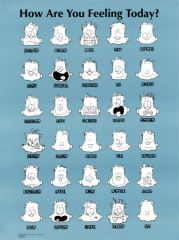
Explain Schacter-Singer's two-factor theory.
|
The theory that states in order to experience emotion, one must:
1) be physically aroused and 2) cognitively label the arousal Remember those posters in elementary school of labeled emotions? |
(picture)
|
|
|
Explain the Cannon-Bard theory of emotion
|
The theory that an emotion-arousing stimulus simultaneously triggers:
1) physiological responses and 2) the subjective experience of emotion Like when a cannon bursts, you physically and emotionally react at the same time |
Simultaneous CANNON BURST!
|
|
|
Explain the opponent-process theory of emotion
|
The theory that states:
following a strong emotion, an opposing emotion counters the first emotion, lessening the experience according to our cognitive explanation for the arousal So remember the common phrase "opposites attract;" for every strong emotion, an opposing one can counteract it |
"opposites attract"
|
|
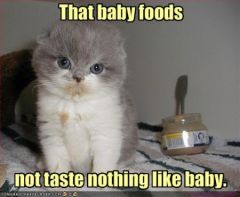
Explain the cognitive-appraisal theory
|
The theory that our emotional appearance depends and changes on our interpretation of the situation we are in
Like the cat who wants to eat baby food, he changes his mood as his interpretation of the situation changes |
The cat reacts to an unexpected event
|
|
|
At what level of arousal do we perform best with:
1) difficult tasks? 2) moderate tasks? 3) simple tasks? |
1) low levels of arousal
2) medium levels of arousal 3) high levels of arousal Like saying a tongue twister: Ideally, difficult sayings should be said with ease, simply rolling the tongue Ideally, easy sayings should be said with speed and require a bit more concentration to get it out successfully |
Negative correlation
|
|
|
People experience negative emotions show more activity in what region of the brain?
And what about positive moods? |

Negative emotions- right prefrontal cortex (Phineas Gage was punctured in this region, and he because a very bitter and negative person)
positive moods- left frontal lobe (essentially the opposite region of negative emotions) |
Where was Phineas Gage hit? How did this affect him?
|
|

How is the "nucleus accumbens" involved with emotions?
|
There is a neural pathway that increases dopamine levels running from the frontal lobes to the nucleus accumbens. This small region lights up when people experience natural or drug-induces pleasures. Electronic stimulation of the nucleus accumbens has triggered smiling, laughter, and giddy euphoria.
The "ee" sound in "nucleus" makes you smile, one of the functions of the nucleus accumbens |
Say "nucleus." Does it make you smile? :)
|
|

Give an example supporting the James-Lange theory.
|
Patients with severed spinal cords report little change in their emotions, hence emotions are generated solely by cognitive means.
Though the girl may be suffering from spinal injuries, she still maintains a happy disposition |
How does the girl feel?
(Remember, J comes before L like the P____ response comes before the E____ response) |
|

Describe the spillover effect.
|
The spillover effect was the discovery that a stirred-up state can be experienced as one emotion or another very different one, depending on how we interpret and label it
The placebo effect (which uses pills) is one variant of the spillover effect |
sPILLover -->pills---> placebo effect
|
|
|
Describe the "low-road" pathway that sensory stimuli may travel when triggering an emotional response
|
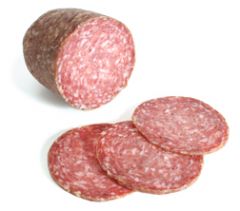
Sensory information runs to the thalamus and then straight the amygdala to acting accordingly, bypassing the cortex and moving very swiftly
Thalamus--> Amygdala ("thal"-"amy"?) |
"Thal" is the main pathway to Amy's Fear House... in the lower part of the brain.
|
|
|
Describe the "high-road" pathway that sensory stimuli may travel when triggering an emotional response
|
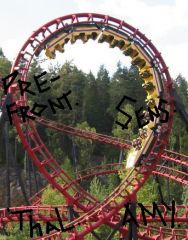
Sensory information runs from the thalamus to the sensory cortex and then to the prefrontal cortex before it is sent to the amygdala, allowing thorough analysis of the information
Thalamus-->Sensory-->Prefrontal-->Amygdala Makes a sort of loop of a roller coaster, which gives an adrenaline rush/high |
What's one LEGAL way people get a "high?" Roller coasters...yeah!
|
|
|
How did Zajonc and LeDoux interpret the route to emotional responses?
|
Both emphasize that some emotional responses are immediate, before any conscious appraisal (a la "low-road")
And remember the rhyme: LeDoux likes it low (as in "low-road") |
LeDoux likes it low
|
|
|
How did Lazarus, Schacter, and Singer interpret the route to emotional responses?
|
They emphasize that our appraisal and labeling of events determine our emotional response (a la "high-road")
Remember the rhyme: Lazarus likes the label (along with Schacter and Singer) |
Lazarus wants the label
|
|
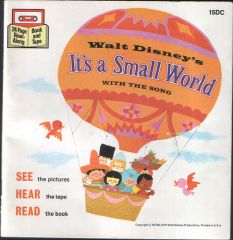
Are children's facial expressions universal? How about blind children?
|
Yes, and yes.
Remember the message of It's a Small World: "a smile means friendship to everyone" |
Do you notice the universal expression of the multicultural children?
|
|
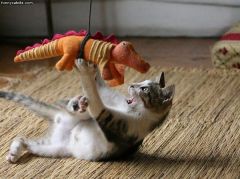
What is catharsis, and when is it effective?
|
Catharsis is emotional release that is only effective if:
1) the counterattack is directed against the provoker 2) if the retaliation seems justifiable 3) if their target is not intimidating For the picture: 1) the cat is attacking a directed object 2) the cat has been assumedly bothered by the toy due to his pesky owner, hence justification 3)the cat is attacking an object of weaker stature than himself |
Look at how the cat is relating to the toy
|
|
|
What is the best way to handle anger?
|
1) Wait
2) Deal with anger in a way that involved neither being chronically angry nor passively sulky (both rehearsing your reasons for your anger) Remember the short ditty and you'll be set to go |
Stop your tantrum;
don't be glum. Count to ten; Do it again. |
|
|
Describe the feel-good, do-good phenomenon.
|
This is people's tendency to be helpful when already in a good mood
Using logic is the best way to remember |
Look at the title. Really, it's that simple:
If you___________, you will_________. |
|

Discuss the daily duration of emotions.
|
Negative emotion is highest after we just wake up and before we go to sleep (upward facing parabolic graph).
Positive emotion rises gradually and then falls gradually after about seven hours (downward facing parabolic graph). Emo people are very "emotional," so think about how they feel in regards to positive and negative emotions: negative things makes them happy face :) (concave up parabola) positive things makes them sad face :( (concave down parabola) |
Emo people:
negative things makes them happy face :) positive things makes them sad face :( |
|
|
What is the relationship between wealth and happiness?
|
Money helps avoid pain, but only increases happiness in the short term. Long term, affluence does not increase happiness at either the individual or national level
Remember the relationship of stereotypical modern newlyweds: short-term happiness (honeymoon) long-term suffering (leading to divorce) |
Their relationship is similar to modern newlyweds: starts with the honeymoon phase, but then the dives into a divorce
|
|

Describe the adaptation-level phenomenon
|
This is our tendency to form judgments relative to a neutral level defined by our prior experience
The interview adapted his expectations of the interviewee with information of his past, fitting the adaption-level phenomenon |
How does the interviewer's opinion of the interviewee change with the new information?
|
|
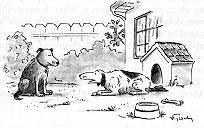
Describe relative deprivation.
|
This is the perception that one is worse off relative to those with whom one compares oneself
Think of the comic: The dog has everything, and yet he isn't happy in comparison to his dog friend |
(quote to go with the comic)
"I've got the bowl, the big yard, I know I should be happy" |
|

List some factors that are not related to happiness.
|
-parenthood
-age -gender -education levels (PAGE) These are the generic facts you must list on usually PAGE 1 of your college application |
What do you include in the general information section of college applications?
|

